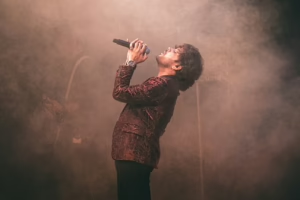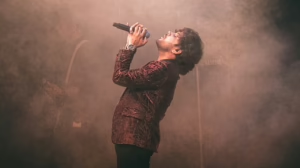The Art of the Trailer: How Film Previews Hook Audiences
The film industry is an intricate tapestry of storytelling, creativity, and marketing. One of the most fascinating and often underestimated elements of this industry is the film trailer. A well-crafted trailer serves as a crucial marketing tool, setting the stage for audiences and hooking them long before the film makes its debut. This article delves into the art of the trailer, exploring its historical evolution, psychological influence, and the techniques filmmakers and marketers employ to captivate viewers.
Historical Context of Trailers
The concept of the film trailer can trace its roots back to the early 20th century. Initially, trailers were often a literal trailer that followed the feature film, designed to promote forthcoming attractions. It wasn’t until the 1940s that trailers began to take on their modern form, featuring edited clips from the film to pique interest without revealing too much of the plot[^1].
The golden age of trailers can be linked to the 1970s and ’80s, when studios began employing more sophisticated marketing techniques. The release of the original “Star Wars” in 1977 marked a pivotal moment; the film’s trailers utilized a mix of thrilling visuals, iconic music, and intriguing dialogue, setting a new standard for what trailers could achieve[^2]. This shift laid the groundwork for the elaborate marketing strategies that are commonplace today.
The Psychology Behind Trailers
Understanding the psychology behind viewer engagement is essential to creating a successful trailer. Several cognitive biases and emotional triggers can influence audience perceptions and desires.
Anticipation and Curiosity
One of the primary psychological strategies behind trailers is the creation of anticipation. By offering glimpses of action-packed sequences, dramatic moments, or emotional beats, trailers build excitement. The principle of “curiosity gap” plays a crucial role here; audiences want to know more, prompting them to seek out the movie to satisfy their curiosity[^3].
Emotional Engagement
An effective trailer taps into the viewer’s emotions, using music, dialogue, and imagery to evoke feelings such as sadness, thrill, or joy. For instance, emotional music can drive a poignant moment home, while fast-paced cuts paired with a high-energy soundtrack can ramp up excitement for an action film[^4].
The Power of Editing
Editing is one of the most powerful tools in trailer creation. The juxtapositions of shots, pacing, and rhythm can influence how a viewer feels about the story being told. Successful trailers often utilize nonlinear narratives, creating a sense of intrigue while ensuring that essential elements of the film are still conveyed[^5].
Familiarity Breeds Comfort
Another psychological concept in trailer creation is the appeal of familiarity. Trailers often leverage recognizable stars, themes, or genres, making it easier for audiences to form connections and feel more comfortable about the viewing experience. The presence of a popular actor can draw viewers in, while well-known genres (like horror or romantic comedy) offer established expectations[^6].
Techniques in Trailer Creation
There are several techniques that filmmakers and marketers utilize when creating a trailer. These methods are often combined to optimize audience engagement.
The Hook
The first few seconds of a trailer are critically important. This “hook” must capture attention immediately. Many trailers open with striking visuals, an intriguing line of dialogue, or a captivating sound effect. Establishing a strong hook ensures that the audience is compelled to keep watching[^7].
Narrative Structure
Trailers typically follow a three-act structure that reflects traditional storytelling arcs. The first act introduces the characters and setting; the second builds conflict and stakes; and the third often culminates in a climactic moment, leaving viewers eager to find out what happens next. This method maintains intrigue while providing just enough context for the audience[^8].
The Use of Text and Voiceovers
Text overlays, such as release dates or quotes from critics, can enhance viewer engagement and imprint important information. Voiceovers are also powerful tools, offering narration that can provide context or set the emotional tone of the trailer. Effective use of voiceovers can create an atmosphere that resonates with audiences and enriches their emotional experience[^9].
Genre-Specific Techniques
Different genres employ unique techniques to appeal to their target audience. For example, horror trailers often utilize jump cuts, dark visuals, and unsettling sounds to conjure fear, while romantic-comedy trailers emphasize moments of connection, lighthearted dialogue, and humor[^10]. Understanding genre conventions allows trailer creators to effectively communicate the essence of the film.
The Role of Music and Sound Design
Music plays an indispensable role in trailer creation. A well-chosen soundtrack can evoke deep emotional responses, set the tone, and enhance the visuals. It acts as an emotional guide, shaping the viewer’s perception and engagement.
The Importance of Sound Design
In addition to music, sound effects and design contribute significantly to the overall impact of a trailer. Whimsical sound effects can enhance comedic moments, while ominous sounds can heighten suspense. The synthesis of sound design elements in a trailer can heighten the viewer’s emotional investment, making the film more enticing[^11].
The Trail of Familiar Tunes
Using familiar songs can create an immediate connection with the audience, evoking nostalgic feelings while conveying thematic elements associated with the movie. For example, a trailer for a coming-of-age film might utilize an upbeat pop song to resonate with the target demographic, enhancing their emotional connection to the content[^12].
The Impact of Digital Media
With the rise of the internet and social media, film trailers have evolved dramatically. Digital platforms now serve as critical venues for trailer distribution, creating opportunities for viral marketing and audience engagement.
Social Media Campaigns
Trailer releases are often accompanied by extensive social media campaigns, generating buzz and encouraging audience interaction. Platforms like Instagram, TikTok, and Twitter enable studios to share trailers widely, using targeted ads and audience engagement strategies to maximize reach[^13].
Fan Engagement and User-Generated Content
Fan interactions on social media can lead to the creation of user-generated content, such as memes or reactions to trailers. This community engagement fosters excitement and anticipation surrounding film releases, transforming audience members into active participants in the film’s marketing journey[^14].
The Influence of Influencers
Influencer marketing has also made waves in trailer promotion. Popular social media personalities often receive early screenings and exclusive content, allowing them to generate buzz and excitement among their followers. This strategy is particularly ingrained in the marketing of films targeting younger audiences[^15].
Case Studies: Iconic Trailers
To further highlight the effectiveness of trailer techniques, we can examine specific case studies of iconic film trailers that have successfully hooked audiences.
“Inception” (2010)
Christopher Nolan’s “Inception” featured a highly praised trailer that brilliantly combined compelling visuals with a haunting score by Hans Zimmer. The trailer utilized the “hook” concept effectively, opening with a striking image of a city bending in on itself. Its editing style, which included rapid cuts and a climactic build-up, heightened audience anticipation and left them questioning the film’s premise long before its release[^16].
“The Social Network” (2010)
David Fincher’s “The Social Network” presents another exemplary trailer. The combination of Aaron Sorkin’s sharp dialogue and a pulse-pounding soundtrack creates an atmosphere of tension and urgency. The trailer not only hooked viewers with its intriguing premise but also provided a glimpse into the film’s themes of ambition and betrayal, prompting widespread interest and acclaim[^17].
“Deadpool” (2016)
The trailer for “Deadpool” subverted traditional expectations by employing humor, self-awareness, and fourth-wall-breaking commentary. Its unique approach distinguished it from typical superhero trailers, allowing the film to stand out in a crowded market. The nostalgic appeal of familiar comic book aesthetics combined with fresh comedic timing ensured that this trailer resonated widely with audiences[^18].
“Get Out” (2017)
Jordan Peele’s “Get Out” trailer effectively leveraged psychological horror techniques to build suspense while keeping critical plot points ambiguous. The trailer’s use of juxtaposition—ordinary settings contrasted with disturbing elements—captivated audiences and made the film’s unique premise irresistible to horror fans[^19].
The Ethics Surrounding Trailers
While creating captivating trailers is essential for film marketing, ethical considerations are also crucial. Misleading trailers can result in audience disappointment and distrust toward film studios. It’s important for trailers to represent the film accurately, striking a balance between intrigue and authenticity[^20].
Representation and Inclusivity
Additionally, the representation of diverse characters and stories in trailers has come under scrutiny. When trailers reflect the diversity found in a film’s narrative, they foster inclusivity and broaden audience appeal. Ensuring equitable representation in trailers is critical for an increasingly diverse viewing population[^21].
The Future of Trailers
As technology and audience preferences continue to evolve, the future of trailers is poised for transformation. Virtual reality, augmented reality, and interactive trailers may become the norm, providing audiences with immersive experiences before a film’s release. These innovations could allow viewers to engage with characters and narratives in more profound ways, ultimately reshaping how trailers are created and consumed[^22].
Short-form Trailers
The rise of short-form content, particularly on platforms like TikTok, may also influence the structure of trailers. With audiences’ attention spans diminishing, quick, punchy trailers may become the standard. Studios might focus on delivering teasers that entice without revealing too much, sparking curiosity and leading to higher attendance[^23].
Conclusion
In conclusion, the art of the trailer is a nuanced and intricate craft that serves as a vital component of film marketing. Through an understanding of historical evolution, psychological engagement, effective techniques, and advancements in digital media, filmmakers and marketers have honed the art of the trailer into a powerful tool for captivating audiences. As the landscape of the entertainment industry continues to change, the strategies employed in trailer creation will undoubtedly evolve. The ongoing interplay of storytelling, emotional engagement, and innovative marketing techniques will ensure that trailers remain a key aspect of the film experience, tantalizing audiences and drawing them into the cinematic world.
[^1]: Unforgotten, “The History of Film Trailers”.
[^2]: Film Scholars, “Narrative Structure in Trailers”.
[^3]: Audience Psychology Journal, “Curiosity and Viewing Patterns”.
[^4]: Emotional Media Studies, “Soundtracks in Film Marketing”.
[^5]: The Editing Society, “Techniques of Film Trailers”.
[^6]: Familiarity Bias Review, “Audience Preferences in Cinema”.
[^7]: First Impressions Journal, “Impact of Initial Hook”.
[^8]: Traditional Narrative Design, “Three-Act Structure in Trailers”.
[^9]: Textual Analysis in Media, “Voiceovers and Their Impact”.
[^10]: Genre Studies, “Techniques in Horror and Comedy”.
[^11]: Sound Design Innovations, “The Impact of Audio in Trailers”.
[^12]: Nostalgia in Media, “Using Familiar Tunes”.
[^13]: Social Media Marketing Today, “Trailer Release Strategies”.
[^14]: User-Generated Content Studies, “Influence of Fan Engagement”.
[^15]: Influencer Marketing Academy, “The Effect of Influencers”.
[^16]: Trailer Metrics, “Analyzing ‘Inception'”.
[^17]: Cinematic Analysis Journal, “The Social Network Trailer”.
[^18]: Genre Disruption Journal, “Innovations in ‘Deadpool'”.
[^19]: Psychological Horror Journal, “The Trailer for ‘Get Out'”.
[^20]: Ethics in Film Marketing, “Transparency in Trailers”.
[^21]: Inclusive Media Journal, “Representation in Trailers”.
[^22]: Future Media Trends, “Innovations in Trailer Formats”.
[^23]: Attention Economy, “Short-Form Content and Trailers”.


























Add Comment